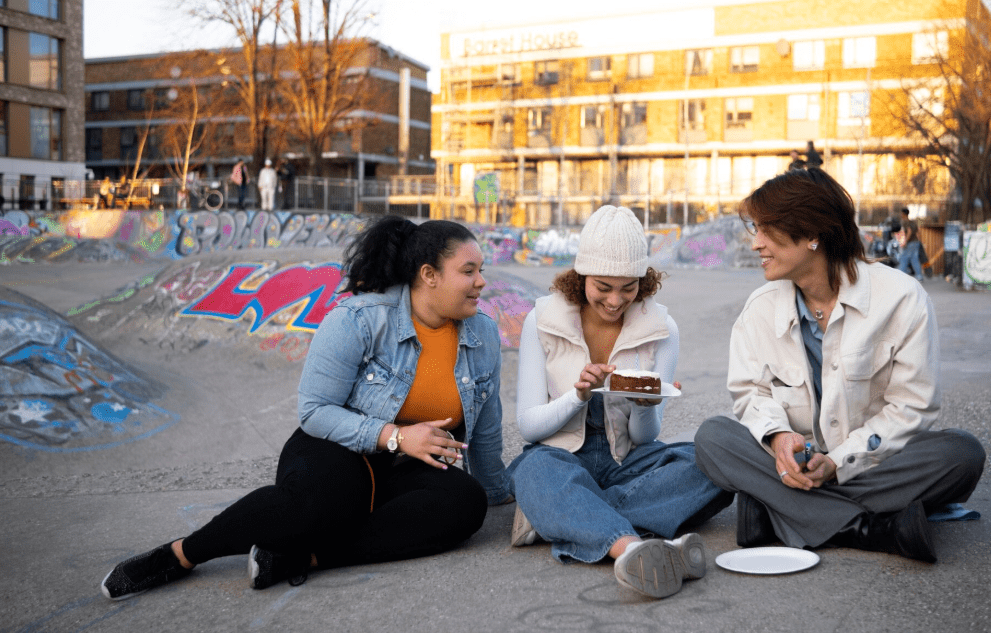Atlanta proudly incorporates its culture into every orchestral crescendo and sidewalk painting, wearing it like a badge rather than just showcasing it. Creative energy flows astonishingly freely, yet noticeably unevenly, across the metro. Castleberry Hill is teeming with experimental works, while Midtown’s gallery walls continue to display some of the best art in the city. However, the question that is becoming more pressing is whether the city’s entire body is being nourished by this artistic vitality or if only its more privileged areas are.

Atlanta has forged its artistic identity over the last ten years by bold storytelling, resiliency, and reinvention. The BeltLine’s concrete canvases, where murals emerge with both political urgency and creative flair, are a literal representation of that story. It pulsates through jazz riffs that reverberate from historic venues and reverberates throughout spoken-word platforms that have given rise to artists such as Abyss and Dominique Arcé. However, the cultural ecology is at a turning point; it is full of potential but is also beset by structural flaws that require urgent correction.
Atlanta Arts & Cultural Landscape Overview
| Category | Information |
|---|---|
| City | Atlanta, Georgia |
| Known For | Civil Rights Movement heritage, Hip-hop, Film & TV, Black cultural influence |
| Cultural Institutions | High Museum of Art, Atlanta Symphony Orchestra, Alliance Theatre |
| Emerging Art Districts | Westside, Midtown, Castleberry Hill, Old Fourth Ward |
| Prominent Festivals | Atlanta Jazz Festival, Out On Film, National Black Arts Festival |
| Grassroots Initiatives | Living Walls, WonderRoot, The Creatives Project, Atlanta Influences Everything™ |
| Ongoing Challenges | Artist displacement, rising cost of living, limited funding beyond city center |
| Key Opportunities | Art-led neighborhood revitalization, city-funded grants, expansion of public art programs |
| Reference |
Funding for the arts and institutional attention have mostly focused on regions inside Atlanta’s city borders in recent years. Even though Midtown is thriving because to its collection of modern galleries and the High Museum of Art’s allure, many nearby neighborhoods are still noticeably underprivileged. The fact that financial assistance sometimes ends at county lines, establishing an imperceptible barrier to opportunity, is especially concerning. The displacement of Black and Brown creatives as a result of rising costs of living is a sharp contrast to the city’s branding as a Black cultural epicenter, which is a proud claim made by the metro area.
Examining the conflict between urban expansion and cultural preservation makes this dynamic more evident. Ironically, whenever underappreciated communities gain commercial appeal, artists—who are sometimes the first to bring them to life—are also among the first to be priced out. This dynamic is remarkably similar to what happened in Brooklyn and Oakland, where gentrification was fueled by cultural vibrancy but left the original creators behind.
Atlanta’s creative elite, however, is remarkably resilient in the face of these obstacles. WonderRoot and The Creatives Project are two collectives that have made it very evident what their goal is: to develop artistic talent in underserved communities. Their initiatives go beyond aesthetics, using public art as a vehicle for youth empowerment, identity reclamation, and civic discourse. Their strategy has been incredibly successful in fostering an inclusive and necessary sense of creativity.
In particular, public art has evolved into a potent form of advocacy. One is likely to come across installations that directly address issues of Afro-futurism, mental health, and resistance while strolling through the West End or East Atlanta Village. These artistic manifestations are not merely ornaments; they are unadulterated, uncommercialized, and based on the needs of the society.
Atlanta’s artistic heritage is still remarkably diverse in terms of music. Although the city is well-known throughout the world for its contributions to hip-hop and trap, its classical, jazz, and independent communities are also growing. Because of the Atlanta Symphony Orchestra’s partnerships with modern Black composers, orchestral music is no longer seen as exclusive, opening doors for a wider range of new listeners.
In terms of theater, the Alliance Theatre and True Colors Theatre Company have increased their dedication to portraying the demographic reality of Atlanta. In addition to Southern ancestry, recent shows have focused on immigration, LGBTQ+ identity, and environmental justice. In a time when demands for true representation are quickly displacing performative allyship, these performances felt particularly urgent and emotionally poignant.
Atlanta is discovering—possibly the hard way—that the arts are essential components of civic well-being rather than merely ornaments for economic growth. Higher levels of community pride, increased youth engagement, and noticeably better mental wellness are frequently observed in neighborhoods with easily accessible, well-supported creative spaces. Any urban planner would agree that these results are quite efficient, but the funding sources don’t always reflect that fact.
A change in the way cultural capital is measured is necessary to guarantee that artistic life permeates every area of Atlanta. City planners need to evaluate how deeply creative infrastructure supports underrepresented artists, going beyond superficial measures like gallery openings or visitor numbers. This entails providing studio space and inexpensive housing, including the arts into school curricula, and maintaining funding cycles that extend beyond one-time events.
Atlanta’s cultural sector has already started to change through clever alliances. Programs for the promotion of artistic careers, specifically for Black and Latinx creatives, have emerged as a result of partnerships between civic offices, academic institutions, and charitable foundations. In addition to addressing gaps, these initiatives are creating pathways to recognition and sustainability.
The city’s future depends on realizing that a flourishing art scene requires an ecosystem rather than just one district to thrive. Decatur deserves its murals, but Midtown is home to the High. While College Park has undiscovered stories, the Westside may have commercial buzz. Atlanta needs to think about whether its cultural reach expands along with the city or if some voices are ignored as it grows.
